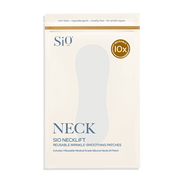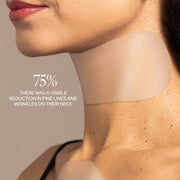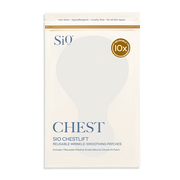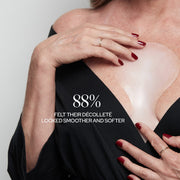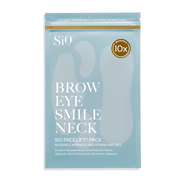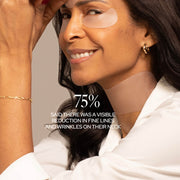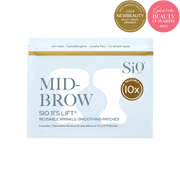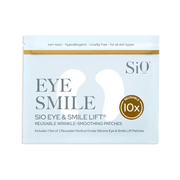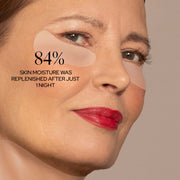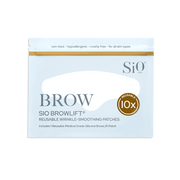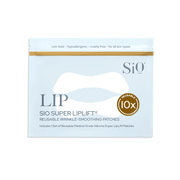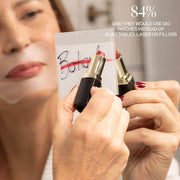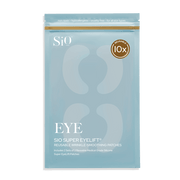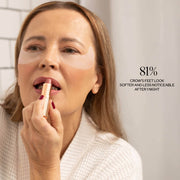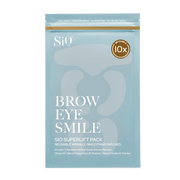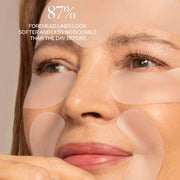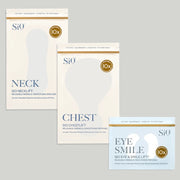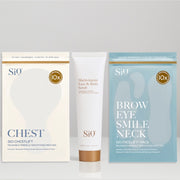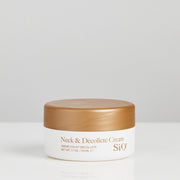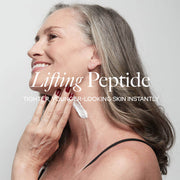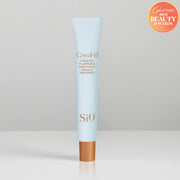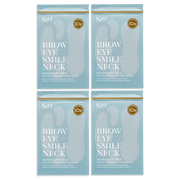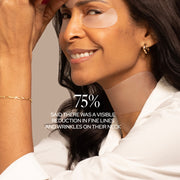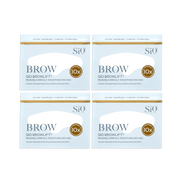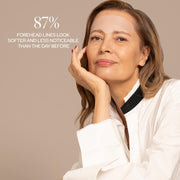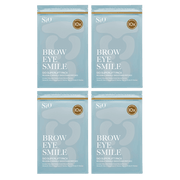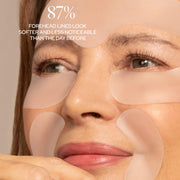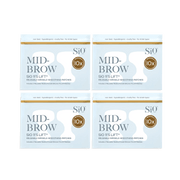Unraveling the Wrinkle Mystery: When Do Wrinkles Start and How to Minimize Them?

This article has been medically reviewed by Dr. Dendy Engelman, Board-certified Dermatologist.
No matter your age, wrinkles can feel like a looming threat. It’s easy to feel like we’re racing against the clock, slathering on skincare in hopes that it keeps the creases at bay. But, despite their prevalence, there’s still a veil of mystery surrounding exactly how – and when – wrinkles appear.
We’re here to shed light on wrinkles, how they form, and what you can do to soften them. After all, knowledge is power, and understanding wrinkles could be the key to maintaining smooth skin in all of life’s seasons.
Understanding the Anatomy of Wrinkles
Medically known as rhytids, wrinkles are lines and creases in the skin that don’t go away when you relax your facial muscles. While they’re a natural part of the aging process, many factors contribute to wrinkle formation. These factors fall under two different categories: intrinsic and extrinsic aging.
What is Intrinsic Aging?
Intrinsic aging is most simply described as your body’s aging process from the inside out. It’s affected by your genetic makeup, free radical-related DNA damage, and hormonal shifts.
With age, the body naturally starts to produce less collagen, elastin, and hyaluronic acid. This change can be categorized as intrinsic aging and plays a large role in wrinkle formation.
- According to clinical research, the skin’s total collagen content decreases by approximately 1% per year in adulthood.
- Additionally, the skin’s collagen production is decreased by around 75% in individuals over age 80 when compared to that of 18 to 29-year-olds.
- Research indicates that the skin’s HA content can start dropping in your 20s and may be reduced to 50% by age 50.
Along with collagen, elastin, and HA, the skin’s structure relies on ample fat cells. With age, these cells shrink and shift downward, causing the skin to become thinner and weaker. This change compounds with damaged proteins to trigger wrinkles.
What is Extrinsic Aging?
Extrinsic aging involves external factors that worsen or accelerate the natural aging process. The most prevalent extrinsic aging factor is UV ray exposure from the sun, which causes cumulative skin damage over time.
We’ll describe other extrinsic aging factors, like pollutants and stress, in greater detail below.
According to clinical research, extrinsic aging can be characterized by:
- Elastosis, which refers to degenerative changes in the dermis due to damaged elastin
- Damage to the skin’s protein structure (such as collagen damage)
- Inflammation in the skin
The Age of Wrinkles: Unveiling the Timeline
Of all the questions surrounding wrinkles, one is especially common: When do wrinkles start to appear?
When Do Wrinkles Start?
The age at which you start getting wrinkles varies from person to person. Generally, the body’s collagen production starts to decline in your mid-20s. Dynamic wrinkles from repeated facial expressions may start to appear around age 25 and then can become more noticeable in your 30’s. Static, age-related wrinkles become more visible in your 40’s and 50’s.
On average, men’s skin is 10 to 20% thicker than women’s. The thicker skin is, the more resistant it is to dynamic wrinkles. However, men still tend to develop more severe wrinkles than women, which may come down to occupational sun exposure and other lifestyle factors.
Normal wrinkles at 35 and younger result from repeated facial expressions. Also known as expression lines, these wrinkles tend to be shallow until later in adulthood. However, genetics and extrinsic factors can cause more prominent wrinkles in your 20s and 30s.
How Do Genetics Affect When Wrinkles Develop?
Research indicates that up to 60% of variations in skin aging between people come down to genetic factors. Genetics influence how much collagen, elastin, and hyaluronic acid your skin produces. Additionally, hereditary factors affect the amount of melanin in your skin, and melanin provides natural protection against sun damage.
Generally, you may develop wrinkles at a similar age to your immediate family members. While we can’t change our genetics, we can slow wrinkle production (even with a genetic predisposition to them) with a healthy lifestyle and proactive skincare.
Average Wrinkles By Age: Which Facial Areas Develop Wrinkles First?
Many people notice the earliest signs of wrinkles on the forehead and around the eyes. These areas are common sites of expression lines; raising your eyebrows can cause horizontal creases in the forehead, while smiling and laughing can cause crow’s feet around the eyes.
Later in life, you may start to develop deeper wrinkles in other areas of the face, like nasolabial folds (which are shaped like parentheses around the mouth) and vertical lines around the lips.
Various factors can accelerate wrinkle formation, making them appear sooner than usual. These fall under the category of extrinsic aging, as we discussed above, and may include sun exposure, pollution, and chronic stress, among other factors.
Decoding the Factors that Accelerate Wrinkles
We’ve already discussed how genetics and the natural skin aging process lead to wrinkles. But, various extrinsic factors also play a role, with the potential to significantly accelerate wrinkle production. Here’s how:
- UV exposure is responsible for up to 80% of visible signs of aging, including wrinkles!
Lifestyle Adjustments to Slow Wrinkle Formation
Lifestyle adjustments are a powerful tool in slowing wrinkle formation. Consider these tips:
- Hone in on skincare. Using a gentle cleanser, thick moisturizer, active-rich serum, and retinoid will set your skin up for success. Consider additional tools, like silicone patches and facial massage devices, to further soften fine lines.
Addressing Common Concerns About Wrinkles
Still wondering about wrinkles? Let’s answer some FAQs about this prevalent skin concern:
Many people start to see the earliest signs of wrinkles at 25, with deeper wrinkles appearing around age 40.
Yes, 30-year-olds get wrinkles! It’s completely normal to have wrinkles (especially horizontal forehead lines and lines around the eyes) in your 30s.
Some individuals have fine wrinkles at 20, often on the forehead. This may come down to genetics or sun damage.
Forehead wrinkles generally start showing around age 25 and gradually deepen with age.
Forehead wrinkles can go away somewhat with targeted wrinkle treatments, like silicone patches.
Eye wrinkles often appear around age 25. The skin around the eyes is thinner than the skin on the rest of the face, making it particularly prone to signs of aging.
You may suddenly have wrinkles from sleeping in a position that creases your skin. Other causes of aging, including aging, genetics, sun damage, and lifestyle factors cause wrinkles to develop gradually – not suddenly.
Embracing Aging Gracefully: Beyond Wrinkles
After this in-depth discussion of wrinkles, let’s make one point clear – we’re here to embrace, never fear, the beauty of aging. Age is something to take pride in, and wrinkles are a natural part of life’s unique journey!
Nonetheless, you can simultaneously accept wrinkles and strive for more radiant skin. Through sun protection, stress management, a healthy diet, sleeping well, and effective skincare, you can deeply care for your skin’s longevity (as a bonus, all of these habits also support your overall health).
So, start that daily self-care routine you’ve always wanted to try. In prioritizing your health, you can take a proactive stance against wrinkles. Lasting skin health, here we come!

